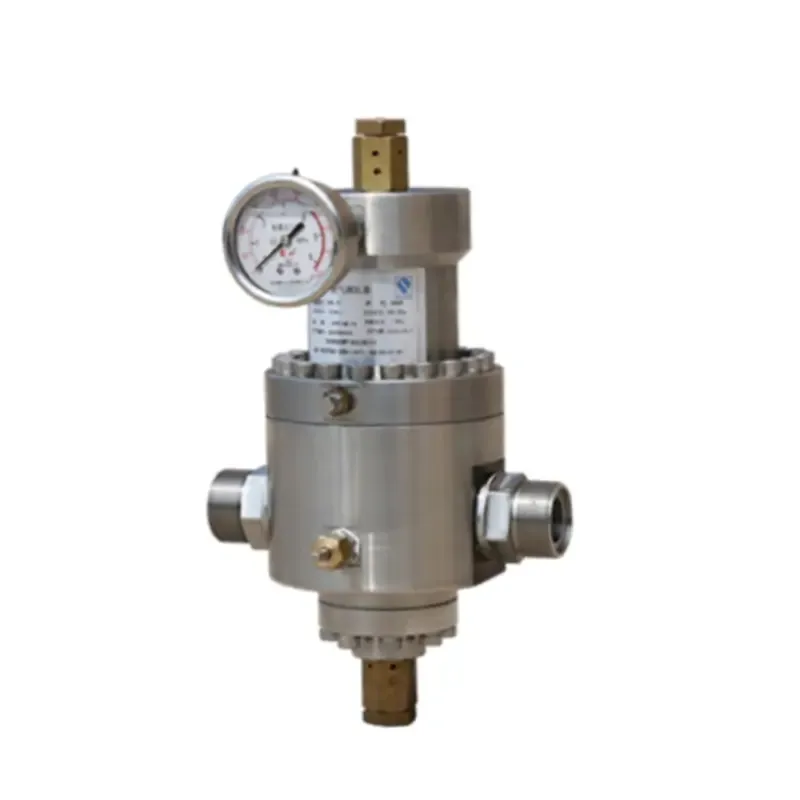
Nov . 25, 2024 04:04
Back to list
Safety Valve Functionality and Importance in Pressure Regulation Systems
The Importance of Safety Valves in Industrial Systems
In the world of industrial operations, the term safety valve plays a critical role in maintaining the integrity and safety of various systems. Safety valves, or pressure relief valves, are devices designed to automatically release pressure from a system when it exceeds a certain predetermined threshold. This function is crucial in preventing catastrophic failures, protecting both people and equipment from the dangers associated with overpressure conditions.
Understanding the Mechanism
A safety valve operates on a simple yet effective principle. Within a closed system, such as a boiler or a pressure vessel, gases or liquids are heated or compressed, leading to an increase in pressure. If this pressure surpasses the design limits of the system, the safety valve opens, allowing excess gas or liquid to escape. By doing so, it prevents the pressure from rising to dangerous levels. Once the pressure drops back to a safe level, the valve automatically closes, ensuring that normal operations can resume without manual intervention.
The design of safety valves varies depending on the specific requirements of the system in which they are used. Common types include spring-loaded valves, weighted valves, and pilot-operated valves. Each type has its own advantages and is chosen based on factors like the type of fluid, operating pressure, and temperature range.
Applications Across Industries
.
Similarly, in the chemical manufacturing process, many reactions can produce gases and heat, increasing the risk of pressure build-up. The implementation of safety valves in reactors and storage tanks safeguards against potential explosions, protecting employees and the environment.
صمام الأمان

Regulatory Standards and Maintenance
Given their critical role in safety, safety valves are subject to stringent regulations and standards. Organizations such as the American Society of Mechanical Engineers (ASME) provide guidelines on the design, testing, and maintenance of safety valves. Compliance with these standards is crucial for ensuring the reliable performance of these devices.
Routine maintenance and testing of safety valves are essential practices that should not be overlooked. Over time, factors such as corrosion, wear, or contamination can affect the valve's performance. Regular inspections help identify potential issues before they lead to failures. Additionally, proper calibration ensures that the valve will function correctly at the designated pressure settings.
The Future of Safety Valves
As industries continue to evolve with advancements in technology, the design and functionality of safety valves are also improving. Innovations in materials science, automation, and monitoring technology are paving the way for more reliable and efficient safety valves. For instance, the integration of smart technology allows for real-time monitoring of pressure levels and the condition of safety valves. This capability can lead to predictive maintenance, reducing the chances of unexpected failures and downtime.
Moreover, as industries strive for sustainability and efficiency, safety valves will play an integral role in the safe operation of new processes and technologies. Their ability to prevent hazardous situations is paramount in a world that increasingly prioritizes safety and environmental responsibility.
Conclusion
In summary, safety valves are indispensable components of industrial systems, providing a critical line of defense against overpressure scenarios. Their proper function not only protects equipment but, more importantly, safeguards the lives of workers and the surrounding community. As technology advances, the future of safety valves looks promising, with enhancements poised to improve safety measures even further. Understanding and implementing effective safety valve systems will remain a priority for industries aiming to enhance operational safety and efficiency.
Latest news
-
Safety Valve Spring-Loaded Design Overpressure ProtectionNewsJul.25,2025
-
Precision Voltage Regulator AC5 Accuracy Grade PerformanceNewsJul.25,2025
-
Natural Gas Pressure Regulating Skid Industrial Pipeline ApplicationsNewsJul.25,2025
-
Natural Gas Filter Stainless Steel Mesh Element DesignNewsJul.25,2025
-
Gas Pressure Regulator Valve Direct-Acting Spring-Loaded DesignNewsJul.25,2025
-
Decompression Equipment Multi-Stage Heat Exchange System DesignNewsJul.25,2025

